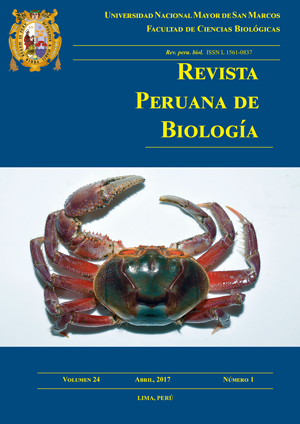Optimum sample length for estimating anchovy size distribution and the proportion of juveniles per fishing set for the Peruvian purse-seine fleet
DOI:
https://doi.org/10.15381/rpb.v24i1.13112Keywords:
length distribution, proportion of juveniles, sample size, on-board observers, anchovy fishery, Engraulis ringens.Abstract
The length distribution of catches represents a fundamental source of information for estimating growth and spatio-temporal dynamics of cohorts. The length distribution of caught is estimated based on samples of catched individuals. This work studies the optimum sample size of individuals at each fishing set in order to obtain a representative sample of the length and the proportion of juveniles in the fishing set. For that matter, we use anchovy (Engraulis ringens) length data from different fishing sets recorded by observers at-sea from the On-board Observers Program from the Peruvian Marine Research Institute. Finally, we propose an optimum sample size for obtaining robust size and juvenile estimations. Though the application of this work corresponds to the anchovy fishery, the procedure can be applied to any fishery, either for on board or inland biometric measurements.Downloads
Downloads
Published
Issue
Section
License
Copyright (c) 2017 Rocío Joo, Erich Díaz

This work is licensed under a Creative Commons Attribution-NonCommercial-ShareAlike 4.0 International License.
AUTHORS RETAIN THEIR RIGHTS:
a. Authors retain their trade mark rights and patent, and also on any process or procedure described in the article.
b. Authors retain their right to share, copy, distribute, perform and publicly communicate their article (eg, to place their article in an institutional repository or publish it in a book), with an acknowledgment of its initial publication in the Revista Peruana de Biologia.
c. Authors retain theirs right to make a subsequent publication of their work, to use the article or any part thereof (eg a compilation of his papers, lecture notes, thesis, or a book), always indicating its initial publication in the Revista Peruana de Biologia (the originator of the work, journal, volume, number and date).






